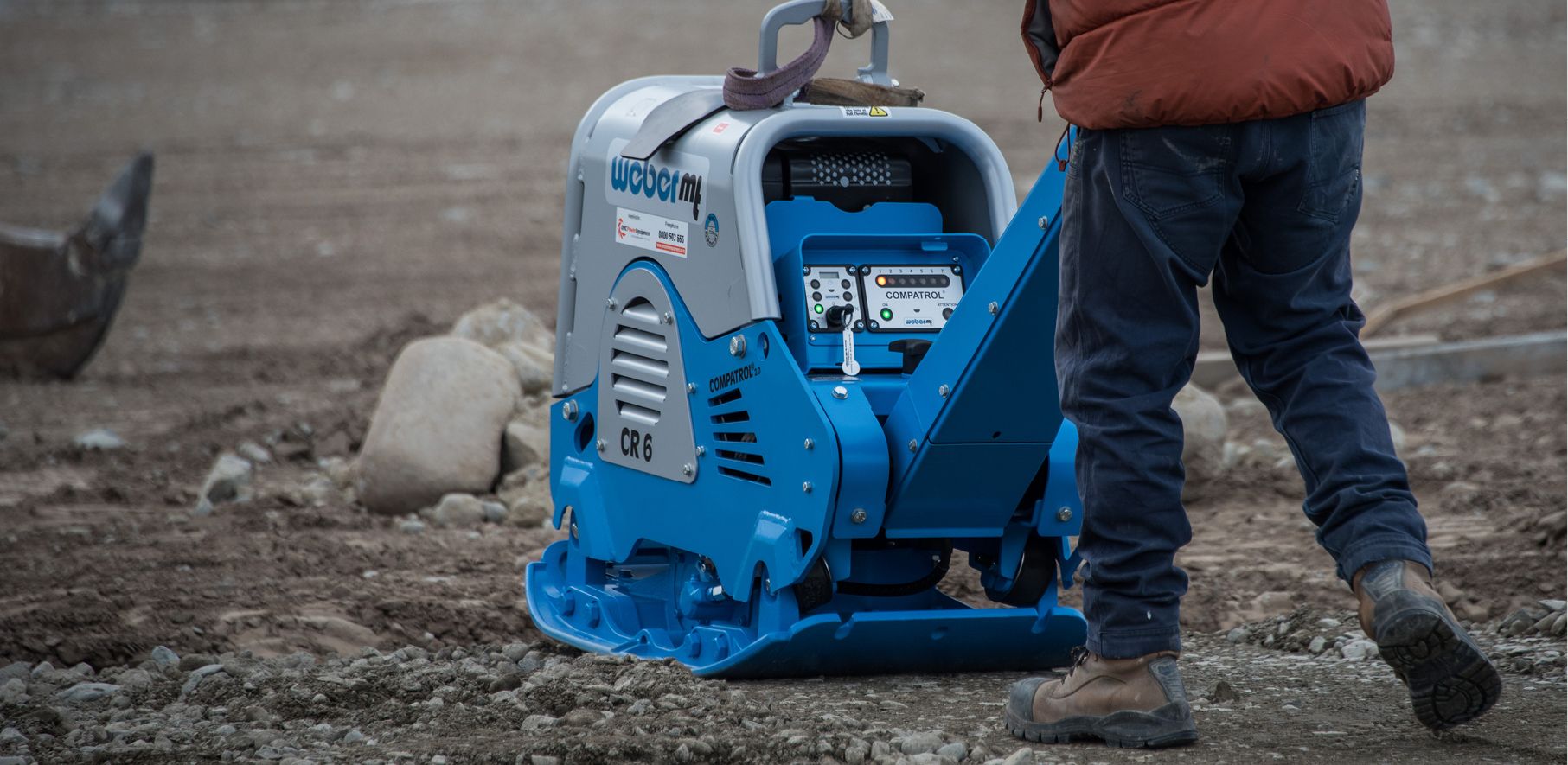How to use a plate compactor: step by step guide

A plate compactor is an incredibly useful machine for levelling uneven ground. This is especially important for building sites, driveway or pathway prep, or anywhere you want a tight, level surface that won’t loosen over time. However, there are several types of plate compactors suited to different situations so let’s get into how they work, and some of our top tips for choosing and using one safely and effectively.
How does a plate compactor work?
As the name implies, a plate compactor utilises a heavy plate to compact the soil below. By moving the plate rapidly up and down, it provides even compaction as it moves across the area, pressing out the air pockets within the soil for a solid base to build on. There are more detailed scientific explanations for how and why soil compaction works if you’re interested.
Tips for using a plate compactor
1. Choose the right type of compactor for the job
There are three main categories of plate compactors to choose from:
- single direction compactors
- trench rammers
- reversible plate compactors
But how do you know which one you need? Each has its own pros and cons but here’s a general guideline:
- single direction compactors are lighter weight and better suited to smaller landscaping or minor asphalting jobs.
- reversible plate compactors are more appropriate for commercial roadworks or large-scale landscaping.
- trench rammers are specifically suited to making the channels or trenches required for heavier groundworks.
Read more about choosing the right compactor for your job here.
2. Prep your work area before compacting
While compactors are powerful machines, it’s still important to remove any loose debris, clumps or soil or large rocks before you begin work. Not only does this make your compaction easier, it also helps prevent potential damage to the machine. Taking the extra time to prepare your site is definitely worth it when you consider the time and money you’ll save in the long run.
3. Think about the moisture content of your site
Moisture content is a bit of a Goldilocks situation when it comes to compaction. Too wet and you’ll face a slurry mess. Too dry and the particles won’t bind together properly. You’re looking for the soil to be slightly damp, but still firm enough to stand out without sinking it. This right amount of moisture will help the soil material bind together and create more solid compaction.
4. Always start slow
Starting your plate compactor at full throttle can cause the plate to bounce excessively at the start. Giving it some time to start the movement at a slower pace will give you better results and keep the operator safer as well.
5. Keep your lines straight and your pace steady
For the most even results, move your compactor steadily in straight lines across the surface and take your time turning it or changing directions at the end of each row. Overlap your lines 30-40% to make sure you don’t miss any sections and the area is uniformly compacted. Keep an even pace and don’t rush!
6. Stay safe while your compacting
Always wear the right PPE, including hearing and eye protection, gloves, dust mask, and steel-capped boots. Check over the machine before you start
for any loose attachments and the fuel and oil are topped up. Keep your clothing, hands and feet clear of the moving parts and hold on to the compactor with both hands while operating it.
Having the right equipment for the job can make a big difference to your outcomes. We’re proud to stock a wide range of Weber MT plate compactors to suit any site. Their German-made and consistently chosen worldwide for their quality and innovation. Plus, they come with an industry-leading 2-year manufacturer’s warranty.
So whether you’re looking for a plate compactor for small jobs or big ones, the team at OMC have you covered.